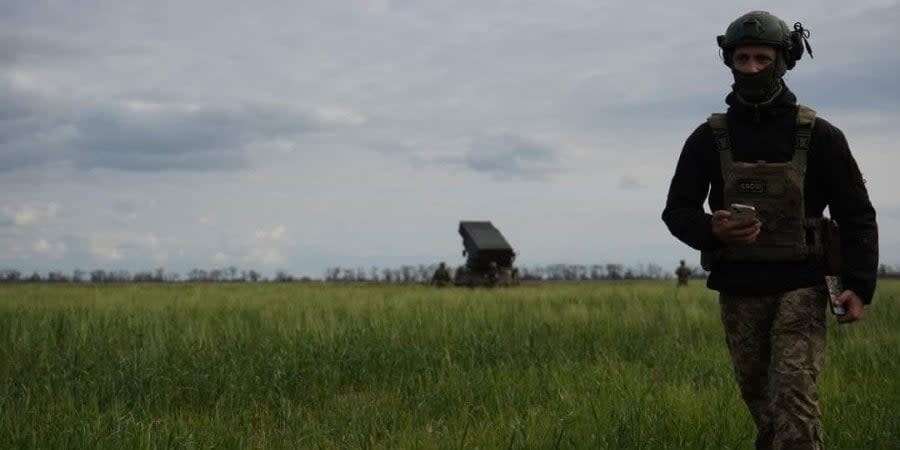Kinburn Spit operation would provide Ukraine with significant advantages, says ISW

On Nov. 21, Ukraine confirmed that the Armed Forces of Ukraine are conducting a military operation "in silence" on the Kinburn Spit, according to Ukrainian military spokesperson Natalia Humeniuk. The ISW notes that control over this location would allow Ukrainian forces to better conduct potential operations on the east bank of the Dnipro River in Kherson Oblast. It is currently the last piece of territory occupied by Russian forces in Mykolaiv Oblast. Kinburn Spit is located just 4 km from Ochakiv (across the strait) and allows for control of the entrance to the mouths of the Dnipro and Pivdennyi Buh rivers, as well as the Mykolaiv and Kherson city ports.
Previously, Russian forces used positions on the Kinburn Spit to launch rocket and artillery attacks on Ukrainian positions in Ochakiv, southern Mykolaiv Oblast, and other areas along the Ukrainian-controlled Black Sea coast. At the same time, the Kinburn Spit is located outside the 25-kilometer range of 152-mm artillery guns concentrated by Russian troops on the east bank of the Dnipro River in Kherson Oblast. This means that control over the Kinburn Spit would help the Ukrainian Armed Forces repel Russian attacks on the Ukrainian-controlled Black Sea coast, intensify naval activity in the area, and conduct potential crossing operations to the east bank in Kherson Oblast – under much less intense Russian artillery fire compared to crossing the Dnipro.
Meanwhile, Ukrainian intelligence believes that Russian intelligence services are planning false flag attacks on critical infrastructure in Belarus — but even such an attempt is unlikely to force the Belarusian military to go to war against Ukraine. ISW recounts information from the Main Intelligence Directorate of the Ministry of Defense of Ukraine about possible "false flag" terrorist attacks on infrastructure facilities in Belarus (including the Belarusian nuclear power plant Ostrovets), which Russia will try to blame on Ukraine. However, ISW analysts note that they still consider it "extremely unlikely" that Belarus will enter the war due to the serious internal risk that such a step could be a threat to the survival of the Lukashenko regime.
"Potential false flag attacks remain unlikely to change the domestic factors that ISW continues to assess constrain Lukashenko’s willingness to enter the war on Russia’s behalf," the Institute's experts believe.
The ISW also stated that two days of shelling (Nov. 20-21) have caused significant damage to the Zaporizhzhya Nuclear Power Plant, although the IAEA confirmed the integrity of all six nuclear reactors and spent and fresh fuel storage facilities. At the same time, Moscow is attempting to blame Ukraine for the shelling. Rosatom CEO Alexey Likhachev warned about the risks of a nuclear disaster at the ZNPP, and Russian "military commanders" used his statements as a pretext to call for the transfer of all Ukrainian NPPs to Russian control.
ISW pointed out that earlier it was the Russian forces that had already conducted attacks on ZNPP "under false flags" and illegally militarized the facility. Direct artillery strikes are unlikely to penetrate the protective shell of nuclear reactors, but pose a great threat to spent fuel storage facilities, which can lead to leakage of radioactive materials and cause a radiological (but not nuclear) disaster. ISW stresses that the constant discussion of the threat of a catastrophe at ZNPP, deliberate confusion in the concepts of radiological and nuclear accidents, is probably "part of a wider Russian information operation meant to undermine Western support for Ukraine and frame Russian control of the plant as essential to avoid nuclear catastrophe." However, such control would in fact force the international community to at least indirectly recognize Russia's illegal annexation of Ukrainian territory, ISW noted.
Read also: Russia’s latest mass missile strike has depleted its reserves of precision weapons, believes ISW
Other conclusions of ISW analysts over the past day:
Ukrainian forces continued counteroffensive operations in eastern Ukraine amid worsening weather conditions;
Russian forces continued ground assaults near Bakhmut and Avdiyivka;
Russian forces continued conducting defensive measures and establishing fortifications in Kherson Oblast south of the Dnipro River as Ukrainian forces continued striking Russian force accumulations in southern Ukraine;
Russian mobilized personnel continue to protest and desert as their relatives continue to publicly advocate against mobilization issues;
Russian occupation authorities intensified filtration measures and the incorporation of occupied territory into Russia.
Read the original article on The New Voice of Ukraine

